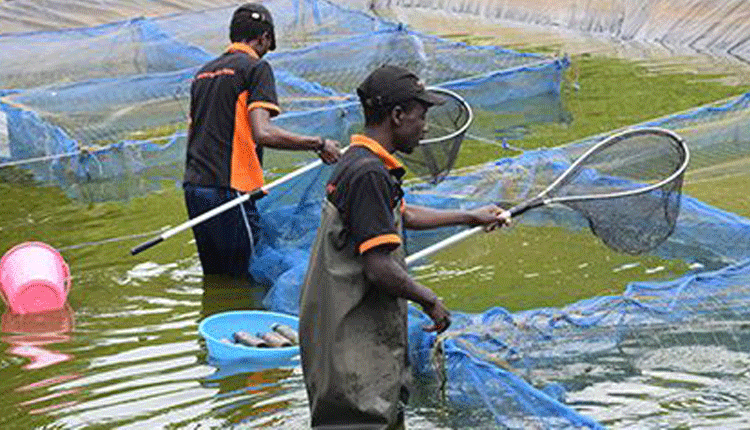Counties tap Sh15b to stir the blue economy
By People Reporter, August 30, 2021Kepher Otieno
The national government has tapped seven counties to stir aquaculture sector’s growth and boost households’ income per capita and create wealth and jobs.
The move which aims to spur aquaculture farming is funded by the International Fund for Agricultural Development (IFAD) at a cost of Sh15 billion and will take eight years to implement.
Fisheries and Blue Economy Principal Secretary Dr Francis Owino says the project has been set up to help small businesses to commercialise new innovative products for the fish farming industry.
“This initiative is projected to increase the fish industry’s turnover in the and create thousands new jobs in the sector in the next eight years and we are asking fish traders to embrace it in large scales,’’ he said.
Project on schedule
Already, with funding to the tune of $150 million (Sh15 billion) aquaculture to boost fish production in the country, the state has begun it’s implementation.
The lion’s share in this budget will be for direct Programme Investment, that is, pond construction materials such as liners, anti-bird nets, predator fence, fish seeds (fingerlings) and fish feeds for smallholder fish farmers.
Speaking during distribution of free fingerlings, inputs and motorbikes for field extension officers in Kisumu at the weekend, Owino said the deal will generate thousands of new jobs for the industry.
The project is currently being implemented in aquaculture producing counties areas including, Busia, Homabay, Kisumu, Migori, Meru, Kirinyaga and Nyeri counties. It was also launched in Homabay and Migori over the weekend.
“I direct that our National Government Administration officers as well as the Extension staff ensure compliance to the proper use of these materials for their intended purpose,’’ said the PS.
Kenya has an annual fish demand of 500,000 tonnes compared to 148,300 tonnes leaving an annual deficit of about 350 000 tonnes, meaning there is still more need to increase fisheries investment.
Aquaculture sub-sector
Aquaculture provides up to 24 per cent of the country’s total fish production, with the balance coming from rivers, lakes and the Indian Ocean realm.
Owino said the Big Four Agenda is working towards spurring economic transformation, positively impacting the lives of Kenyans and fast-tracking realization of the Vision 2030.
“The fisheries and aquaculture sub-sector provide food in addition to supporting about a million people, both directly and indirectly,’’ he said while distributing assorted aquaculture input essentials to the farmers.
Already, the government has put in place initiatives for the development of the sector and its contribution to the socio-economic development of the nation.
Beneficiary farmers will be expected to participate in actualizing the various activities of the programme.
They will be expected to carry out such activities as clearing of bushes, desilting of ponds and repair of dykes; provide labour for pond management and keep records for pond operations for purposes of Programme Monitoring and Evaluation.
Kisumu Deputy Governor Dr Mathews Owili pledged more support for aquaculture to boost food and nutritional security, however, he admitted that the main challenge facing fish farming especially in Lake Victoria include dwindling fish stock.
This is happening due to illegal fishing, weak enforcement of irregular fishing, management pressures and encroachment of fish breeding zones, including inadequate infrastructure.
‘’If we improve on this and pull up our synergies and resources, then we will do better in boosting fish production and bridge the national deficit,’’ Nyaga said.
They also decried the problem of water hyacinth weed as one of the major causes of depleted fish breeding ecosystems.
More Articles

